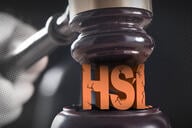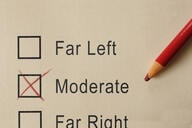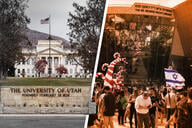You have /5 articles left.
Sign up for a free account or log in.
Incidents targeting students of color and of different sexualities and religions continue to plague campuses, and the number of incidents appears to be increasing, according to a new report.
Because these episodes are on the rise -- white supremacist literature proliferating at colleges and universities, racial slurs written in public places and dormitories, for example -- advocates are urging administrators to be vocal in denouncing them and suggest they have a plan in place for when they occur.
Two groups worked on the report -- the Lawyers' Committee for Civil Rights Under Law and the Fund for Leadership, Equity, Access and Diversity, or LEAD Fund, part of the American Association for Access, Equity and Diversity (AAAED).
They created a survey with 30 questions to send to professionals on the AAAED mailing list asking about hate- or bias-related incidents on their campuses. The survey was also made available at the AAAED annual conference last year.
A total 69 staffers, whom the groups called “equal opportunity professionals” -- generally employees of a university’s diversity or student affairs offices -- answered the survey. Most came from public, four-year institutions (64 percent) while 25 percent worked at private colleges or universities. Roughly 9 percent were from two-year institutions, and 2 percent reported "other" institutions.
Almost all the survey participants -- 84 percent -- were from predominantly white institutions, with the remainder at minority-serving institutions.
They were asked whether certain acts had occurred on their campus, ranging from a hate crime, hate speech or conduct prohibited under an institution’s antidiscrimination policy to behavior that is “uncivil” -- rude, but perhaps not motivated by bias.
About 84 percent of the participants indicated they knew of some sort of behavior violating an antidiscrimination policy, and 82 percent had encountered a hate crime.
Roughly 65 percent of staffers knew of a report of what they considered hate speech.
The groups did not independently verify the hate incidents reported in the survey, said Christopher Jones, a co-author of the report and assistant vice president and director of equity in the Office for Inclusion, Diversity and Equal Opportunity at Case Western Reserve University. But these reports were based on the last two years and would not have included incidents that later turned out to be not true.
The Federal Bureau of Investigation, though, said in November that nearly 280 hate crimes had been reported to the agency by campus police forces in 2017. This was an uptick from 257 in 2016 and 194 reports in 2015.
Three-fourths of those who took the AAAED survey said some sort of hate-bias episode occurred within the last two years. And 38 percent reported that in the last two years, a hate-bias incident happened once per semester.
In terms of types of hate-bias acts, about 64 percent of the professionals reported that in the last two years they encountered some sort of bias in the form of leaflets or pamphlets with racist or Nazi symbols. About 54 percent indicated in the past 24 months they knew of hate speech on campus.
Jones said "it stood out" how frequently these incidents were happening.
"That was particularly telling," Jones said.
Most often with hate-bias incidents, administrators are finding outside groups -- such as those geared toward white nationalism -- are coming onto the university grounds and distributing literature.
This has been previously documented by other groups. The Anti-Defamation League documented 107 incidents of hate or bias during the 2016-17 academic year, and a majority of them concerned fliers on campus.
But minority students are also finding evidence of bias in classrooms, said Shirley J. Wilcher, executive director for AAAED. Professors might be calling out black students to answer questions about race, or women to address perspectives on gender, Wilcher said. Also common is displays of hate inside residence halls, or on social media, which can spread quickly. But leaflets are among the most major issue, Wilcher said.
The groups developed a tool kit for universities to use to plan for such episodes.
Colleges need to develop a communication strategy to address an incident as soon as possible, said Richard Baker, assistant vice chancellor and vice president for equal opportunity services for the University of Houston System.
Officials should make clear what each individual person’s role is during such a crisis, what their job would entail, Baker said. Administrators, even if they run into First Amendment issues where speech or an act would be protected, can denounce the activity in the harshest of terms, which will often ease student concerns.
“Students in particular want action -- they don’t want silence,” Wilcher said.
This strategy was employed successfully in 2017 at the University of Florida, which was one stop for white supremacist Richard Spencer on his tour of campuses nationwide. He was attempting to rile the student body with his fringe views, Spencer said publicly. (He has since ceased his countrywide circuit after encountering financial problems.)
When Spencer proclaimed that the university president, Ken Fuchs, “stood behind” him, Fuchs replied on Twitter, “I don’t stand behind racist Richard Spencer. I stand with those who reject and condemn Spencer’s vile and despicable message.”
The tool kit also suggests that officials set up an easy way to report incidents, such as providing a complaint form online and also a hotline, and then advertising those avenues to the campus.
Establishing a hate-bias team is also an option -- these have become quite common on campus, and they often are charged with investigating a problem and also providing support for students who feel marginalized or attacked.




